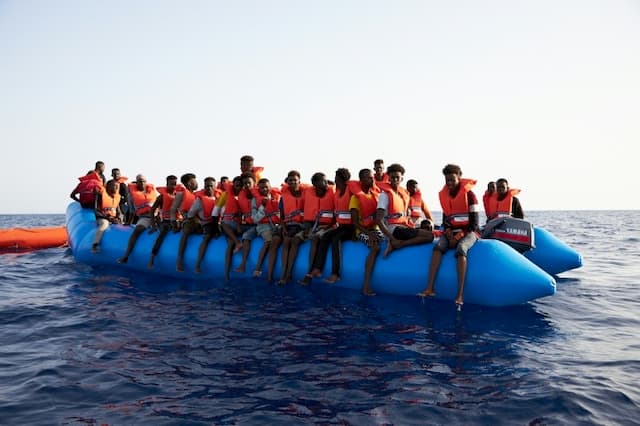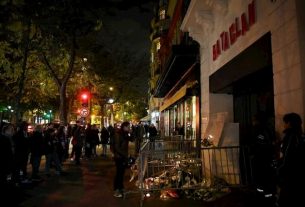This is “the worst tragedy in the Mediterranean this year,” said the UN High Commissioner for Refugees Thursday 25th July 2019.
More than 110 migrants are missing after the sinking of their boat off Libya on Thursday, July 25, 2019, a new drama described by the UN as the “worst” tragedy in the Mediterranean Sea this year.
According to the International Organization for Migration (IOM), about 100 other migrants aboard the boat that sank off the western Libyan town of Khoms were rescued. They must be placed, according to the Libyan navy, in detention centres whose conditions are often denounced by NGOs.
IOM and the Libyan Navy have provided different figures on the number of migrants who have been missing and rescued by the coastguards of a country that has been plunged into chaos since 2011 with power struggles and law-making militias.
Safa Msehli, communications officer at the IOM office in Libya, told AFP that 145 migrants had been rescued and brought back to Khoms, 120 km east of the Libyan capital Tripoli. Some survivors said that their boat sank and that there were still some 150 migrants on board, she added.
General Ayoub Kacem, a spokesman for the Libyan navy, said that “134 migrants were rescued and a body recovered, while 115 migrants are missing.”
“A wooden boat carrying about 250 illegal migrants, including women and children, (…) was wrecked within 5 nautical miles of the coast according to survivors’ testimony,” he said in a statement.
The “worst tragedy”
The rescued migrants, mostly Eritreans, but also Palestinians and Sudanese, “are still at the coast guard station” in Khoms and “could not be handed over to shelters”, according to Mr Kacem. “We expect the Ministry of the Interior and, specifically, the body to fight against illegal immigration, to take charge of them”.
“The worst tragedy in the Mediterranean this year has just happened,” said UN High Commissioner for Refugees (UNHCR) Filippo Grandi on Twitter.
“The resumption of rescue operations at sea, the end of the detention of refugees and migrants in Libya, the multiplication of safe escape routes out of Libya are now necessary (…),” he said.
Generally, migrants rescued at sea and brought back to Libya are initially greeted by the Libyan Red Crescent, IOM staff and local organizations who provide care and food. Then they are placed in detention centres.
In recent months, NGOs have denounced the conditions of detention of migrants, according to them the migration policy of European countries concluded with the Libyan authorities.
According to IOM figures, at least 5,200 people are currently in detention centers in Libya.
“Protection”
The European Union is supporting the Libyan coastguards to slow down arrivals on the Italian coast, some 300 km from the Libyan side. In 2017, it validated an agreement concluded between Italy and Tripoli to train and equip the Libyan coastguard. Since the number of arrivals in Europe via the Mediterranean has fallen sharply.
“Refugees and migrants in Libya are extremely vulnerable and are entitled to protection under international humanitarian law,” said Thomas Garofalo, director of the Libyan office of the International Rescue Committee (IRC).
For him, it is “urgent” that NGO search and rescue missions be “decriminalized” and that Operation Sophia be restored. “Only in this way can we avoid tragedies like the one we have experienced today.”
In recent years, the ships of the NGOs and those of the European operation Sophia intervened to rescue the migrants. But these operations suffered in 2019 from the reduction of Sophia’s field of action and the steps taken against NGOs from European states seeking to limit the arrival of migrants.
Before Thursday’s sinking, UNHCR and IOM had reported at least 426 people dead trying to cross the Mediterranean since the beginning of the year.
Despite persistent violence since the fall of Moamer Kadhafi’s regime in 2011 after a revolt, Libya remains an important transit point for migrants fleeing instability in other parts of Africa and the Middle East who seek to join Europe.




